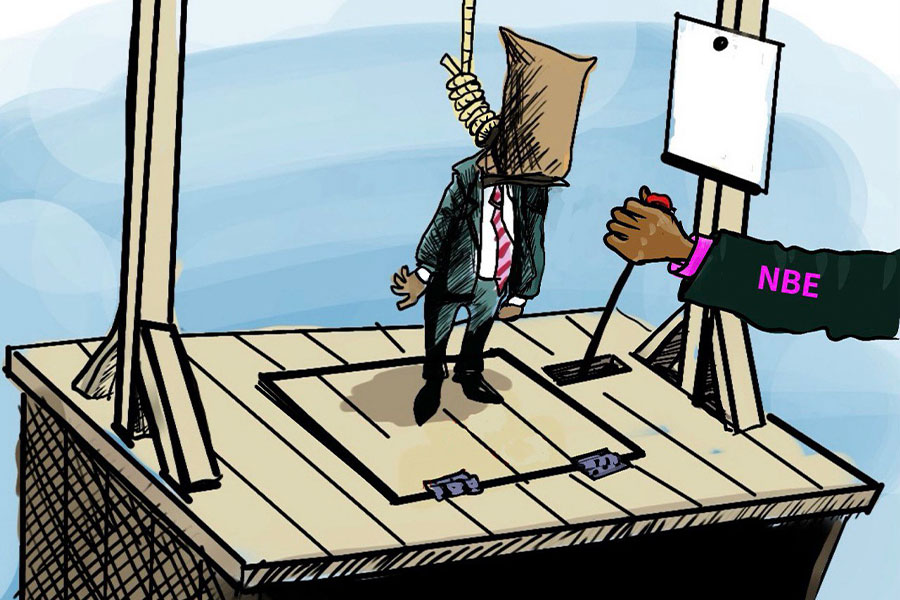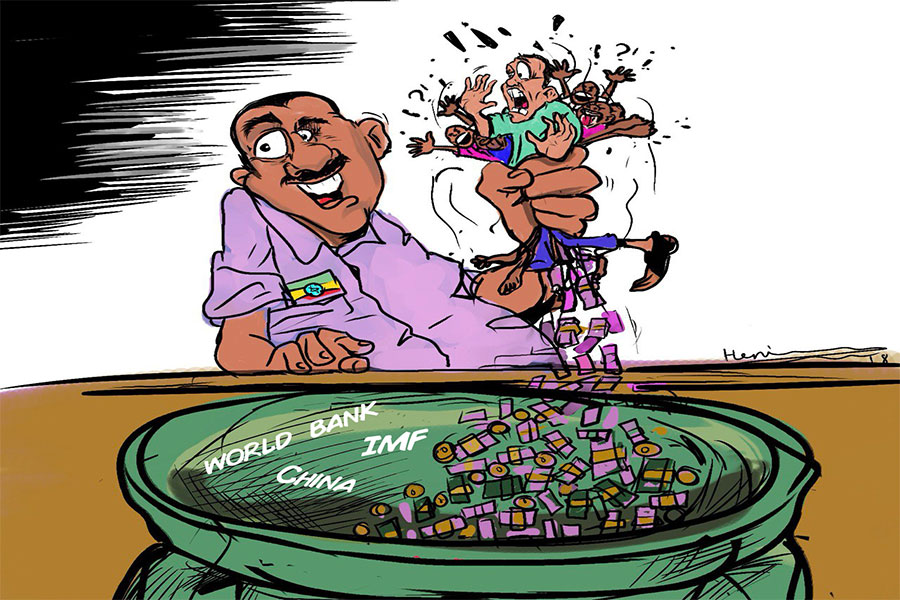
Oct 25 , 2025. By Eden Sahle ( Eden Sahle is founder and CEO of Yada Technology Plc. She has studied law with a focus on international economic law. She can be reached at edensah2000@gmail.com. )
My daughter Gabriella and I recently received a lavish gift parcel: premium Ethiopian-made shampoos, body washes, moisturisers, and hair oils. The packaging gleamed. Branded as luxury homegrown, high-end, and it felt like a lavish treat.
But when I looked closer at the bottles in the gift set, I noticed bold remarks: “Ethiopian hair oil,” “Premium body moisturiser,” “Elite salon-quality shampoo.” The price tags confirmed the image and the promo line. Friends spoke of using the brand as a status symbol, a mark of sophistication and success.
Curious to learn more, I flipped the bottle to see the ingredients.
The ingredients list read like a chemistry riddle: parabens, formaldehyde-releasing preservatives, artificial dyes, synthetic fragrances, petroleum derivatives and the like. Time to do a quick research on these components. Some of these, I found, are not merely cosmetic additives; they’re known carcinogens and hormone disruptors.
I ended up tossing the entire set.
Many of the ingredients flagged as desirable for “luxurious skin and hair” are also labelled in scientific literature as health hazards.
Products marketed for both children and adults persist on including chemicals linked to hormone disruption, skin toxicity, and even cancer. And when regulation are not enforced to the fullest as it often is the case in developing markets it falls on us, the consumers, to educate and protect ourselves from these hazardous substances.
Parabens, Benzene, Formaldehyde-releasing preservatives. These aren’t exotic ingredients from a chemistry textbook; they’re in our homes, in our bathrooms, on our skins. They’re part of the beauty routines we trust to make us feel “clean,” “refreshed,” “beautiful.” Yet for years, researchers have warned that some of these chemicals interfere with hormones, impact reproductive health, and increase cancer risk.
Formaldehyde-releasing preservatives, ethylene oxide by-products, certain dyes, and petroleum-derived oils, many of which are used for texture, fragrance, or shelf life, carry potential carcinogenic or hormone-disrupting properties. They affect fertility, reproductive organs, and the overall endocrine balance.
Independent lab reports and scientific studies have found benzene, a known cancer-causing chemical, is evident in everyday products such as shampoos, sunscreens, deodorants, and even hand sanitisers. These weren’t counterfeit items from unregulated street vendors, these are products acquired from luxury and mainstream brands sold in leading stores.
If billion-dollar companies in tightly regulated markets struggle to keep toxins out of their products, what hope do smaller, local producers have, especially in countries like ours, where safety standards are vague and enforcement nearly nonexistent?
In Ethiopia and across Africa, entrepreneurs engaged in beauty products are on the rise. They’re harnessing indigenous botanicals; moringa, black seed, argan, baobab, shea butter to produce skincare and haircare lines that reflect local pride. It’s an inspiring movement prompting value addition, job creation, economic empowerment, and cultural confidence all raped in one.
But there’s a danger in this wave of “luxury branding.” A beautifully packaged product with an expensive price tag, a consumer endorsement, and sleek “Made in Ethiopia” branding can create a false sense of safety and superiority. Consumers assume “luxury” means “safe,” “tested,” or “pure.” Too often, that’s not the case.
True luxury isn’t just about how something looks or feels, it’s about trust, transparency, and integrity. It’s about knowing that what touches our skin won’t harm our body.
Yet, in reality, many so-called premium brands both local and global lack robust purification standards or third-party testing. Few disclose full ingredient sourcing or provide independent safety certifications. Even fewer conduct toxicological risk assessments.
In countries like Ethiopia, the beauty sector operates with limited oversight. Cosmetic products often enter the market without stringent testing or standardised ingredient disclosure. Imported formulations may contain internationally banned substances. Locally made brands, though full of promise, rarely certify their products.
Globally, the beauty industry has faced its reckoning. The U.S. Food and Drug Administration (FDA) and European Union agencies have documented multiple recalls involving benzene and formaldehyde contamination. Big-name brands have been forced to pull “trusted” products off the shelves.
If these lapses happen under strict regulatory eyes, imagine the risk where regulation is barely imposed.
The uncomfortable truth: consumers in developing countries bear the heaviest burden. We become the last line of defense.
Women, on average, use more personal-care products daily—moisturisers, shampoos, conditioners, perfumes, lotions, serums, and cosmetics. Each layer adds to chemical exposure. Over time, this cumulative load can disrupt hormonal balance or stress on the body’s detox systems.
Independent tests on cosmetics found substances such as parabens, ethoxylates, and formaldehyde-releasers appear in a wide range of products. Continuous exposure even in trace amounts can build up and harm health. A few years ago, this hard truth led me to stop using cosmetics altogether.
Children are more vulnerable. Their skin is thinner and more permeable. Their organs are still developing. Their detoxification mechanisms are immature. So when a product is labeled as “gentle,” “organic,” or “luxury kids’ shampoo,” but hides endocrine-disrupting chemicals beneath the marketing gloss, the potential harm is magnified.
I celebrate the rise of Ethiopian entrepreneurship. The use of indigenous oils and botanicals should be a point of national pride. But this pride must come with responsibility.
If Ethiopian brands want to compete globally not just in branding but in integrity they must elevate their safety standards. That means transparent labeling, responsible formulation, independent lab testing, and adherence to international purity benchmarks.
Luxury is not a look. Luxury is a standard.
A truly premium Ethiopian product should be free from known carcinogens, hormone disruptors, and toxic additives. It should have full ingredient disclosure, including chemical origins and testing certifications. It should incorporate independent third-party verification to ensure what’s promised is what’s delivered.
Only then can we say “Made in Ethiopia” with pride for its augmentation of beauty but also safety, trust, and excellence.
The global beauty industry is waking up to the health implications of its products. Recalls and scandals have shaken even the biggest players. Clean beauty, once a niche trend, is now a movement toward reform, demanding transparency and safety over glitz.
Ethiopia has the chance to leapfrog this learning curve. We don’t need to repeat the mistakes of others. We can build our local skin and hair care industry with safety prioritised from start to finish and where luxury means integrity, not toxicity.
That requires collaboration. Policymakers must establish clear cosmetic regulations and enforceable ingredient bans. Manufacturers must invest in safer formulations and testing partnerships. Retailers must verify claims before marketing products as “premium” or “safe.” Consumers must stay informed, read labels, and demand accountability.
Luxury, in its truest form, is purity. It’s honesty. It’s the confidence that what you put on your skin is as wholesome as the story the brand tells.
Ethiopia can lead this revolution. We can build a new standard of conscious beauty where local botanicals meet world-class science, and where pride in our products is matched by proof of their safety.
Because real beauty doesn’t come from a fancy bottle or a glossy ad. It comes from caring for our health. Not status through price tags, but pride through safety. Only then can we truly say: made in Ethiopia, proudly safe for us and the world.
PUBLISHED ON
Oct 25,2025 [ VOL
26 , NO
1330]

Photo Gallery | 180476 Views | May 06,2019

Photo Gallery | 170674 Views | Apr 26,2019

Photo Gallery | 161734 Views | Oct 06,2021

My Opinion | 137287 Views | Aug 14,2021

Nov 1 , 2025
The National Bank of Ethiopia (NBE) issued a statement two weeks ago that appeared to...

Oct 25 , 2025
The regulatory machinery is on overdrive. In only two years, no fewer than 35 new pro...

Oct 18 , 2025
The political establishment, notably the ruling party and its top brass, has become p...

Oct 11 , 2025
Ladislas Farago, a roving Associated Press (AP) correspondent, arrived in Ethiopia in...